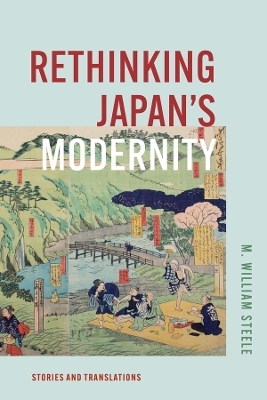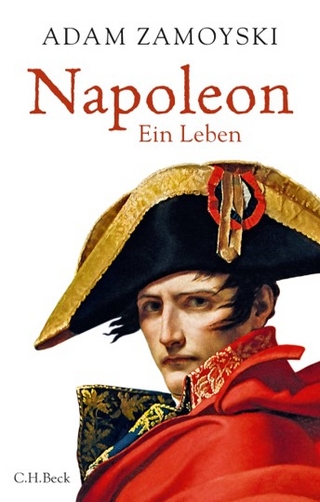
Rethinking Japan's Modernity
Stories and Translations
Seiten
2024
Harvard University Press (Verlag)
978-0-674-29756-2 (ISBN)
Harvard University Press (Verlag)
978-0-674-29756-2 (ISBN)
In Rethinking Japan’s Modernity, M. William Steele takes a new look at the people, places, and events associated with Japan’s engagement with modernity, starting in 1853. Using cartoons, woodblock prints, postcards, photos and other sources, the work informs and challenges our understanding of the links between Japan’s past, present, and future.
History is not one story, but many. In Rethinking Japan’s Modernity, M. William Steele takes a new look at the people, places, and events associated with Japan’s engagement with modernity, starting with American Commodore Matthew Perry’s arrival in Japan in 1853. In many cases, this new look derives from visual sources, such as popular broadsheets, satirical cartoons, ukiyo-e and other woodblock prints, postcards, and photographs. The book illustrates the diverse, and sometimes conflicting, perceptions of people who experienced the unfolding of modern Japan. It focuses both on the experiences of people living the events “at that time” and on the reflections of others looking back. Also included are three new translations—two of them by Japan’s pioneer Westernizer, Fukuzawa Yukichi, and another by Mantei Ōga—parodying Fukuzawa’s monumental work advocating Western learning. These and other stories show how Japanese views of modernity evolved over time. Each chapter is prefaced with a short introduction to the topic covered and historiographical approach taken, allowing each to stand alone as well as support the overall goal of the work—to inform and challenge our understanding of the links between Japan’s past, present, and future.
History is not one story, but many. In Rethinking Japan’s Modernity, M. William Steele takes a new look at the people, places, and events associated with Japan’s engagement with modernity, starting with American Commodore Matthew Perry’s arrival in Japan in 1853. In many cases, this new look derives from visual sources, such as popular broadsheets, satirical cartoons, ukiyo-e and other woodblock prints, postcards, and photographs. The book illustrates the diverse, and sometimes conflicting, perceptions of people who experienced the unfolding of modern Japan. It focuses both on the experiences of people living the events “at that time” and on the reflections of others looking back. Also included are three new translations—two of them by Japan’s pioneer Westernizer, Fukuzawa Yukichi, and another by Mantei Ōga—parodying Fukuzawa’s monumental work advocating Western learning. These and other stories show how Japanese views of modernity evolved over time. Each chapter is prefaced with a short introduction to the topic covered and historiographical approach taken, allowing each to stand alone as well as support the overall goal of the work—to inform and challenge our understanding of the links between Japan’s past, present, and future.
M. William Steele is Professor Emeritus of Japanese History at International Christian University in Tokyo.
| Erscheinungsdatum | 05.09.2024 |
|---|---|
| Reihe/Serie | Harvard East Asian Monographs |
| Zusatzinfo | 18 illus., 63 color illus. |
| Verlagsort | Cambridge, Mass |
| Sprache | englisch |
| Maße | 152 x 229 mm |
| Themenwelt | Kunst / Musik / Theater ► Kunstgeschichte / Kunststile |
| Geisteswissenschaften ► Geschichte ► Regional- / Ländergeschichte | |
| Sozialwissenschaften ► Ethnologie | |
| Sozialwissenschaften ► Soziologie | |
| ISBN-10 | 0-674-29756-3 / 0674297563 |
| ISBN-13 | 978-0-674-29756-2 / 9780674297562 |
| Zustand | Neuware |
| Informationen gemäß Produktsicherheitsverordnung (GPSR) | |
| Haben Sie eine Frage zum Produkt? |
Mehr entdecken
aus dem Bereich
aus dem Bereich
Erinnerungen
Buch | Softcover (2024)
Pantheon (Verlag)
16,00 €


